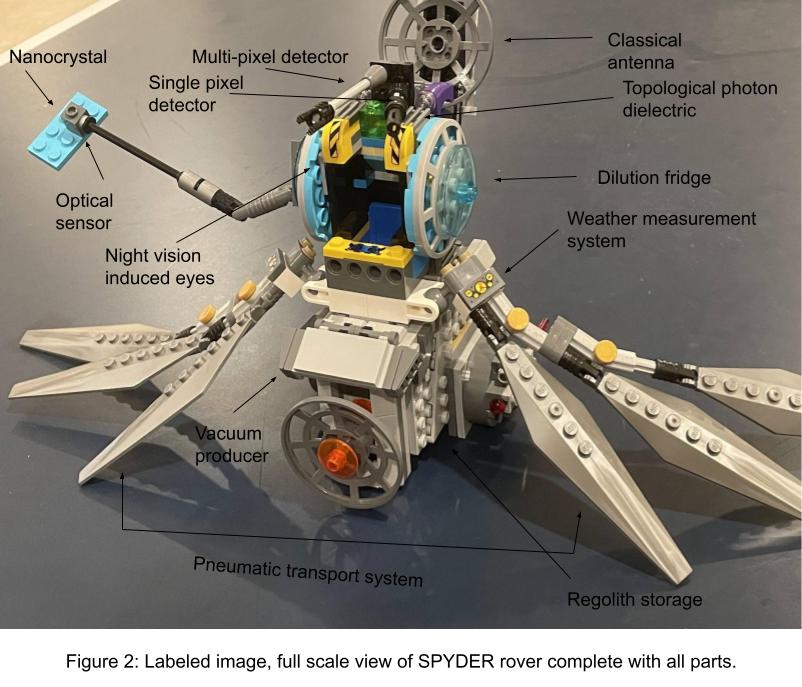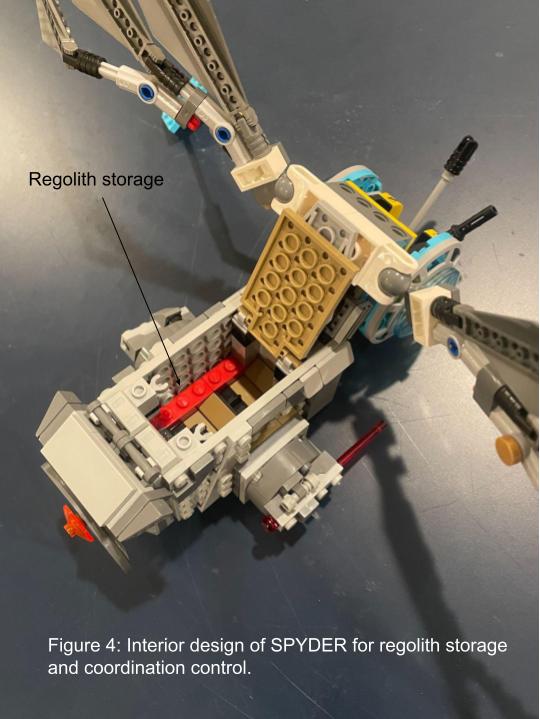Following precedent of a viral RNA sensing model, the Spyder utilizes the defects present in a nanocrystal to detect plausible regolith. This sends a signal to the ghost imaging system, producing high-quality, panoramic images sent directly to headquarters via a topological photon dielectric, sending undisturbed optical signals. Next, the claws convert to a pneumatic tube which uses a partial vacuum or electrodynamic wave generator to transport the soil into a storage area. The built-in dilution fridge uses ultra-cold technology to preserve the soil over long periods of time. If necessary, a turbine is activated to grind unnecessary portions out. Two classical antennas are placed above and below, as well as night-vision induced eyes. The weather system makes important atmospheric measurements sent directly back to headquarters. Most importantly, instead of using wheels, the Spyder has six legs that allow for a more adaptable approach in navigating through the rocky, sticky terrain.
Contact us
Thank you for your interest in contacting Future Engineers. We look forward to connecting with you!
General Inquiries
support@futureengineers.orgSponsorship Inquiries
sponsor@futureengineers.org



